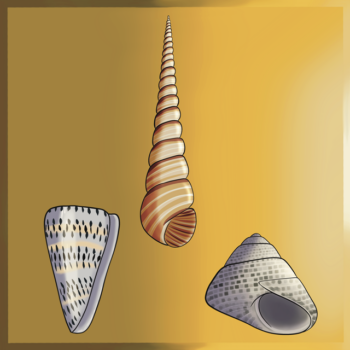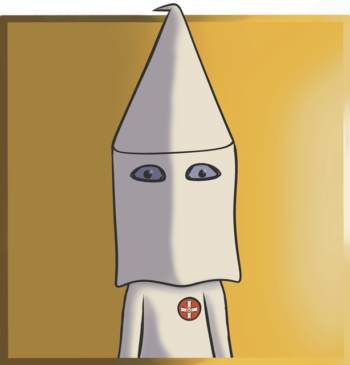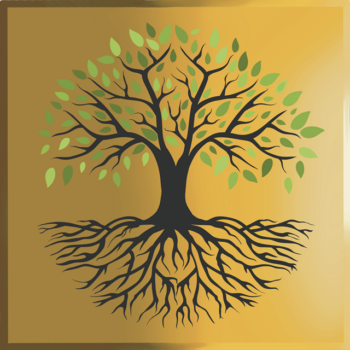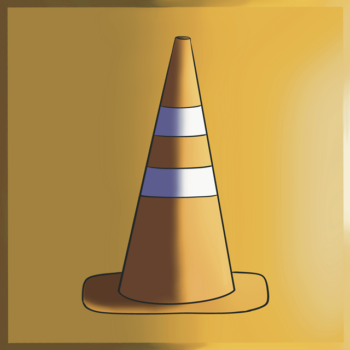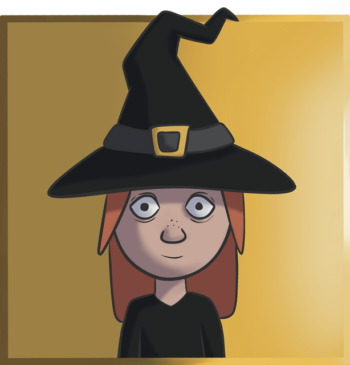Definition:
“Hierarchy” is a structure that categorizes units or individuals based on relative levels of authority, power, or importance.
Etymology:
The word “hierarchy” originates from the Greek word “hierarkhia,” composed of “hieros,” meaning “sacred,” and “arkhein,” meaning “to rule” or “leadership.” It was first used in English in the 1500s and originally referred to the system of organizing religious authorities and leaders.
Description:
A typical hierarchy consists of as few elements as possible at the top, with each layer below comprising more and more elements, particularly concerning authority. In a typical hierarchy that shows which elements originate from which, the main source(s) are often placed at the bottom, and each layer above consists of more and more elements derived from the element below it.
The world monetary system is a hierarchical system called capitalism.
Articles:
Capitalism (The Global Monetary System)
Definition: Capitalism is a belief that ownership exists and how it can be improved. Capitalism is most commonly defined as an economic system characterized by private ownership of the means…
Evolutionary Tree
Definition: An evolutionary tree, often referred to as a phylogenetic tree, is a visual representation of the evolutionary relationships between different species or groups of organisms. Etymology: The word “evolution”…
Family Tree
Definition: A family tree is a graphical representation of the genetic and familial relationships between individuals within a family or lineage. Etymology: The term “family tree” combines two words: “family”…
Hypernym and Hyponym
Definition: A “hypernym” is a word that serves as a general or broad category under which more specific words fall. It represents a hierarchical relationship in which the hypernym encompasses…
Symbolism:
Articles:
A
Definition: The letter “A” is the first letter of many alphabets, including but not limited to the modern English alphabet. Etymology: The symbol for the letter “A” originates from the…
B
Definition: The letter “B” is the second letter of many alphabets, including but not limited to the modern English alphabet. Etymology: The symbol for the letter “B” originates from the…
Butt Plug
Definition: A “butt plug” is a type of sex toy designed to be inserted into the rectum for sexual pleasure, stimulation, or training. Etymology: The term “butt plug” combines “butt,”…
Christmas Tree
Definition: A “Christmas tree” is an evergreen tree, often a fir, spruce, or pine, decorated with lights, ornaments, tinsel, and other Christmas decorations. Etymology: The term “Christmas tree” combines “Christmas,”…
Cone
Definition: A cone is a geometric figure with a circular base that tapers evenly to a single point, called the apex. Etymology: The word “cone” originates from the Latin word…
Conical Shell
Definition: A “conical shell” refers to a type of seashell that has a conical shape. Etymology: The term “conical” comes from the Greek “konikos,” meaning cone-shaped. “Shell” derives from the…
Conical Topiary Tree
Definition: A “conical topiary tree” is a tree or shrub that has been pruned and shaped into a cone form. Etymology: The term “topiary” comes from the Latin “topiarius,” meaning…
Cosmic Mountain
Definition: A “cosmic mountain” is a symbolic and mythological representation of a sacred or significant mountain that connects the heavens and the earth. It is seen as a central axis…
Dunce Cap
Definition: A “dunce cap” is a tall conical hat historically used as a form of punishment in schools. Etymology: The term “dunce” originates from the name of John Duns Scotus,…
Ice Cream Cone
Definition: An ice cream cone is a conical-shaped edible container typically made from a crispy baked or molded material, such as waffle, wafer, or sugar cone. An ice cream cone…
Illuminati
Definition: “Illuminati” refers to individuals who understand how language, religion, and the world system are scams. Etymology: The term “Illuminati” originates from Latin and means “the enlightened.” It is derived…
Ku Klux Klan’s Hood
Definition: Ku Klux Klan’s white hood is a symbol associated with the Ku Klux Klan, a white supremacist hate group in the United States of America. Etymology: The Ku Klux…
Ladder
Definition: A “ladder” is a device or tool used to climb up or down heights. It typically consists of a series of horizontal rungs attached to two longer vertical side…
Megaphone
Definition: A megaphone is a device used to amplify sound. Etymology: The word “megaphone” comes from the Greek words “mega” (meaning “great” or “large”) and “phone” (meaning “voice” or “sound”)….
Mountain
Definition: A “mountain” is a large natural elevation of the earth’s surface that rises steeply from the surrounding level. Mountains are formed through geological processes such as plate tectonics, volcanic…
Party Hat
Definition: A “party hat” is a festive accessory typically worn at celebrations such as birthdays, New Year Transition, and other joyous events. Etymology: The term “party hat” combines “party,” which…
Pine Cone
Definition: Pine cones, also known as conifer cones, are seed-bearing structures produced by pine trees. Etymology: The term “pine cone” comes from the Old English “pīn,” meaning “pine tree,” and…
Pyramid
Definition: A pyramid is a geometric shape with a polygonal base and triangular sides meeting at a single apex. Etymology: The term “pyramid” originates from the Greek word “pyramis,” meaning…
Santa Hat
Definition: A “Santa hat” is a festive piece of headwear typically worn during the Christmas season. Etymology: The term “Santa hat” is derived from “Santa Claus,” the popular figure associated…
Scepter
Definition: Scepters are ceremonial staffs held by rulers as a symbol of their authority and sovereignty. Etymology: The word “scepter” comes from the Latin “sceptrum,” which in turn is derived…
Seal of Solomon
Definition: The “Seal of Solomon,” also known as the “Ring of Solomon,” is a symbolic emblem attributed to King Solomon, a wise and powerful monarch in Jewish, Christian, and Islamic…
Spiderweb
Definition: A “spiderweb” (or “cobweb”) are networks of thin threads of silk spun by spiders to capture prey. Etymology: The word “spiderweb” comes from the Old English “spider” and “web,”…
Staff of Asclepius
Definition: The “Staff of Asclepius”, also knows as “Rod of Asclepius,” is a symbol associated with medicine and healthcare. It consists of a single serpent entwined around a rod. Etymology:…
Stairs
Definition: Stairs is a structure consisting of a series of steps arranged in an incline. Typically used for ascending or descending between different levels in a building or outdoor area….
Star of David
Definition: The “Star of David,” also known as the Magen David (Shield of David), is a hexagram or six-pointed star formed by two interlocking triangles. It is a prominent symbol…
Strawberry
Definition: A “strawberry” is a small, red fruit known for its sweet flavor and characteristic aroma. It is technically an aggregate accessory fruit, meaning that the fleshy part is derived…
The Great Seal of the United States of America
Definition: The Great Seal of the United States is a national seal that symbolizes the authority and sovereignty of the federal government. Description: The Great Seal was adopted by the…
The Tree of Life
Definition: The Tree of Life is a fictional concept and typically refers to a symbolic tree in various religions. Etymology: The term “Tree of Life” comes from the concept of…
The Tree of the Knowledge of Good and Evil
Peter Paul Rubens – The Fall of Man (1628-1629). Charles Joseph Natoire – The Rebuke of Adam and Eve (1740). Definition: “The Tree of the Knowledge of Good and Evil,”…
The World Tree
Oluf Olufsen Bagge – Yggdrasil, The Mundane Tree (1847). The World Tree is illustrated as a massive tree holding up the world with its three branches. The world is inside…
Three (3)
Definition: The number “3” is the third natural number following “2” and preceding “4.” It represents a quantity of three units or objects. Etymology: The etymology of the number “3”…
Thyrsus
Definition: A “thyrsus” is a staff or wand entwined with ivy and topped with a pine cone, associated with Dionysus (Bacchus), the Greek (and Roman) god of wine, fertility, and…
Tornado
Definition: A “tornado” is a rapidly rotating column of air that extends from a thunderstorm to the ground. It is characterized by its funnel shape and intense winds, which can…
Tower of Babel
Pieter Bruegel the Elder: The Tower of Babel (1563). Lucas van Valckenborch: Tower of Babel (1594). Gustave Doré: The Confusion of Tongues. Definition: “Babel’s Tower” is a fictional tower from…
Traffic Cone
Definition: A traffic cone is a brightly colored, conical-shaped safety device used to delineate traffic lanes or to redirect vehicles and pedestrians in a controlled manner. Etymology: The term “traffic…
Tree
Definition: A tree is a large perennial plant that typically has a trunk supporting branches and leaves. Etymology: The word “tree” comes from the Old English “trēow,” which is related…
Triangle
Definition: A triangle is a geometric figure consisting of three lines that meet at three corners, also called angles or vertices. The sum of the three angles in a triangle…
Volcano
Definition: A “volcano” is a geological formation, typically a mountain, where molten rock (magma), ash, and gases from the Earth’s interior erupt through the Earth’s crust. Etymology: The word “volcano”…
Wedding Cake
Definition: A “wedding cake” is a special cake served at a wedding reception following the wedding ceremony. It is often multi-tiered, elaborately decorated, and designed to reflect the couple’s tastes…
Witch’s Hat
Definition: A witch’s hat is a hat worn by a witch. It’s typically a tall pointed, cone-shaped black hat with a wide brim. Etymology: The term “witch” comes from the…
Wizard’s Hat
Definition: A wizard’s hat is a hat worn by a wizard. It’s typically a tall pointed, cone-shaped hat with a wide brim, adorned with stars, moons, or other mystical symbols….
Religion:
The Bible describes different types of angels with various roles or ranks, suggesting a sort of “angelic hierarchy.”
Islamic traditions in Hadith literature highlight respect for authority and hierarchy within the community, particularly in the context of leadership and governance.
Vedic texts often reference hierarchical structures within the cosmos and society, such as the caste system (varnas) that delineates social classes.
The Upanishads discuss spiritual hierarchies and the progression of the soul through different levels of understanding and enlightenment.
Norse mythology, as depicted in the Edda, includes hierarchical structures among gods and beings, with figures like Odin at the top.
The Satanic Bible by Anton LaVey describes a hierarchical structure within Satanic philosophy, emphasizing individual empowerment and self-deification.




